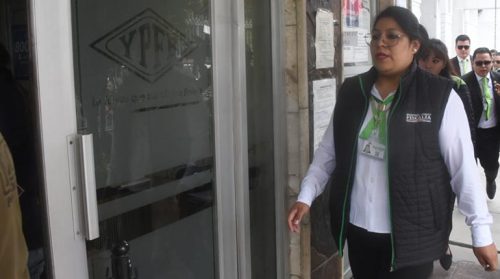Content
Multiple processes are consolidated and all changes, bugs, new features, emergency fixes, etc, follow the same path to production. Decisions are decentralized to the team and component ownership is defined which gives teams the ability to build in quality and to plan for sustainable product and process improvements. As teams mature they will want to focus on automated testing with Unit, Integration, Functional, Stress/Load and Performance testing. Most teams new to automated testing focus on Integration Tests when all teams should start at the lowest level with Unit Tests. As teams grow and mature they should work their way up the pyramid of testing levels.
This system and integration level testing is typically done by a separate department that conducts long and cumbersome test periods after development “code freeze”. At the advanced level you will have split the entire system into self contained components and adopted a strict api-based approach to inter-communication so that each component can be deployed and released individually. With a mature component based architecture, where every component is a self-contained releasable unit with business value, you can achieve small and frequent releases and extremely short release cycles. Continuous Integration , which is a big part of continuous delivery, is the concept of continuously building and testing software using an automated process. We have learned that utilizing CI could help us catch bugs earlier, enable better visibility, reduce repetitive processes, enable the development team to produce deployable products at a moment’s notice, and reduce risk overall.
Producing evaluation metric values using the trained model on a test dataset to assess the model’s predictive quality. CT is a new property, unique to ML systems, that’s concerned with automatically retraining and serving the models. Workflows Workflow orchestration for serverless products and API services. Google Cloud Deploy Fully managed continuous delivery to Google Kubernetes Engine. Smart Analytics Generate instant insights from data at any scale with a serverless, fully managed analytics platform that significantly simplifies analytics. Data Cloud for ISVs Innovate, optimize and amplify your SaaS applications using Google’s data and machine learning solutions such as BigQuery, Looker, Spanner and Vertex AI.
Continuous deployment offers improvement both to customers and developers. Developers don’t experience the pressure of an upcoming Release Day, so they work in more positive environments. As soon as the software or application is ready, developers see it go live. The idea is to deploy changes to production as often and early as possible.That way, a company truly benefits from the model by releasing small batches. During smaller updates, it’s easier to spot any bugs and solve all other problems.
Nothing as Easy as Deploying PHP Apps on Cloud
Semi-automated deployment to a pre-production environment, for example, a deployment that is triggered by merging code to the main branch after reviewers approve the changes. An optional additional component for level 1 ML pipeline automation is a feature store. A feature store is a centralized repository where you standardize the definition, storage, and access of features for training and serving. A feature store needs to provide an API for both high-throughput batch serving and low-latency real-time serving for the feature values, and to support both training and serving workloads.
- Tracking these intermediate outputs helps you resume the pipeline from the most recent step if the pipeline stopped due to a failed step, without having to re-execute the steps that have already completed.
- The model will indicate which practices are essential, which should be considered advanced or expert and what is required to move from one level to the next.
- Continuous Deployment – Continuous deployment goes one step further than continuous delivery, with each build forgoes a manual check, and is automatically pushed to production.
- At intermediate level, builds are typically triggered from the source control system on each commit, tying a specific commit to a specific build.
- At expert level some organizations choose to make a bigger effort and form complete cross functional teams that can be completely autonomous.
- We list all the processes and practices that need to be in place before you can truly claim that you have made Continuous Deployments possible.
- Stack extensibility is an essential trait of well-designed IT ecosystems.
All deployment environments and dev boxes are production-like and live only while required by creating them on-demand and automatically, including all required adjustments. A good build process produces artifacts, logs, and a status per each executed. It is triggered automatically with each code commit, and the history is available for the team to review what has happened over the last executions. Whenever a problem is found, like a test fault or a security vulnerability, the build is marked as failed, since the code is analyzed on every run.
DeployBot
In a recent survey, 69% of IT decision-makers indicated that they were shipping new features to production once per day or more. This highlights the importance of automating manual steps in order to keep pace with the competition. In the following four sections, we discuss why each of these key factors is critical for getting the most out of your efforts, and show you what DevOps maturity looks like. Before you begin this journey, take the time to compare your own organization’s maturity in these areas against the best practices listed in each section, and take note of the areas you need to focus on. This will provide you with the best possible roadmap for adoption efforts. We believe there are four fundamental areas that organizations should focus on when adopting DevOps.

Having broken it down, you can keep optimizing each stage to make your process more efficient. From being a significant event that occupies multiple teams for several days, with CI/CD releasing matures into a familiar and predictable occurrence. To address the challenges of this manual process, MLOps practices for CI/CD and CT are helpful.
MLOps: Continuous delivery and automation pipelines in machine learning
For experimentation, data scientists can get an offline extract from the feature store to run their experiments. Making sure that the performance of the model is consistent on various segments of the data. For example, your newly trained customer churn model might produce an overall better predictive accuracy compared to the previous model, but the accuracy values per customer region might have large variance.
Beginner level introduces frequent polling builds for faster feedback and build artifacts are archived for easier dependency management. Tagging and versioning of builds is structured but manual and the deployment process is gradually beginning to be more standardized with documentation, https://globalcloudteam.com/ scripts and tools. At a base level you will have a code base that is version controlled and scripted builds are run regularly on a dedicated build server. The deployment process is manual or semi-manual with some parts scripted and rudimentarily documented in some way.
Features:
Transfer Appliance Storage server for moving large volumes of data to Google Cloud. Transcoder API Convert video files and continuous delivery maturity model package them for optimized delivery. Private Catalog Service catalog for admins managing internal enterprise solutions.
The application is built only once, using a dedicated server, and the output artifact can be deployed without the need to rebuild for each different environment. Each artifact is tagged and versioned so the build can be traced across the pipeline. With every build run, metrics are gathered and analyzed so the process can be improved.
Whether your business is early in its journey or well on its way to digital transformation, Google Cloud can help solve your toughest challenges. Developing on a CD 3.0 platform, but the cycle is poorly automated. Fault isolation makes the process of detecting the source of errors more functional by reducing the scope of issues. Large “enterprise” suites claiming they can solve all your problems.
At intermediate level, builds are typically triggered from the source control system on each commit, tying a specific commit to a specific build. Tagging and versioning of builds is automated and the deployment process is standardized over all environments. Built artifacts or release packages are built only once and are designed to be able to be deployed in any environment. The standardized deployment process will also include a base for automated database deploys of the bulk of database changes, and scripted runtime configuration changes. A basic delivery pipeline is in place covering all the stages from source control to production. To summarize, implementing ML in a production environment doesn’t only mean deploying your model as an API for prediction.
Amplify feedback for faster resolution
It offers a continuous process of creating and delivering products or services. Every successful and well-organized modern software project requires a combination of continuous integration and continues delivery . Continuous delivery is a widespread software delivery practice used by IT companies to provide custom functions in a faster, safer, and more permanent way. To do so, you need a strong continuous integration pipeline that tests, packages, and delivers your releases. Chaos Engineering – Chaos engineering is the practice of experimenting on a system to test it’s resiliency and is driven by the certainty that a system; at some point, will fail. This is especially true with the uncertainty introduced by the rapid and frequent releases of DevOps.
A business leader’s guide to
At this level real time graphs and other reports will typically also include trends over time. At this level the work with modularization will evolve into identifying and breaking out modules into components that are self-contained and separately deployed. At this stage it will also be natural to start migrating scattered and ad-hoc managed application and runtime configuration into version control and treat it as part of the application just like any other code.
The testing team does not need to wait until the end of sprint/release to verify quality. To measure DevOps maturity by data you have to take into account the ability of DataOps to take action for automating data changes and automatically verify functionality. The DevOps Maturity Model allows you to view DevOps practices in a new light. Let’s examine the role of this model in bringing about a change, be it gaining the right perspective on DevOps practices or using them optimally.
The need for “Sec” in DevOps
Google Cloud Backup and DR Managed backup and disaster recovery for application-consistent data protection. Chronicle SOAR Playbook automation, case management, and integrated threat intelligence. BeyondCorp Enterprise Zero trust solution for secure application and resource access. Cloud Data Loss Prevention Sensitive data inspection, classification, and redaction platform.










Más historias
PRESIDENCIA DE YPFB DESTITUYE A DIRECTORES DE 9 DISTRITOS
DIPUTADOS DAN LUZ VERDE A LA ELECCIÓN DE VOCALES DEL TSE SIN EXÁMENES Y CON PLAZOS MÍNIMOS
EL PRESIDENTE SE DA 6 MESES PARA REVERTIR “EL DESPILFARRO Y LA DEMAGOGIA” QUE DEJO AL MAS